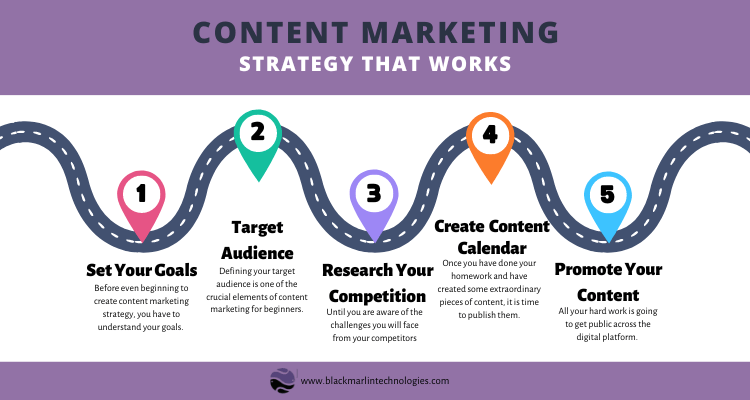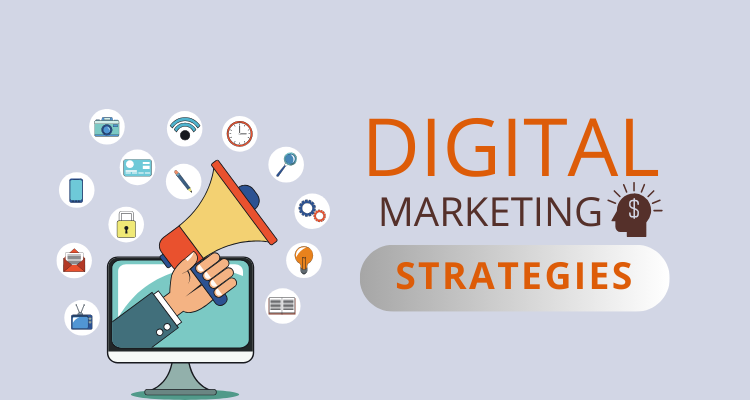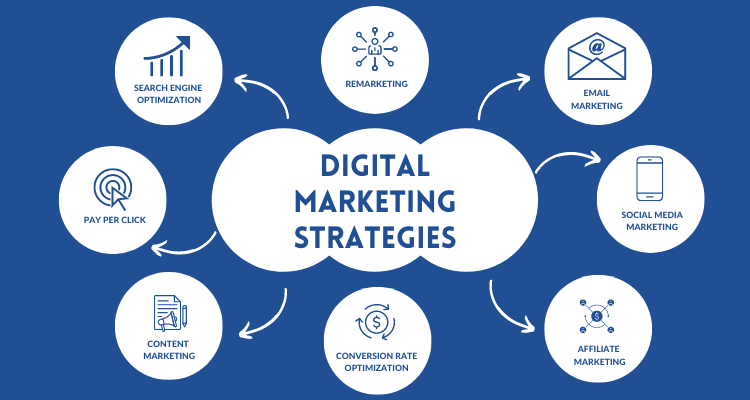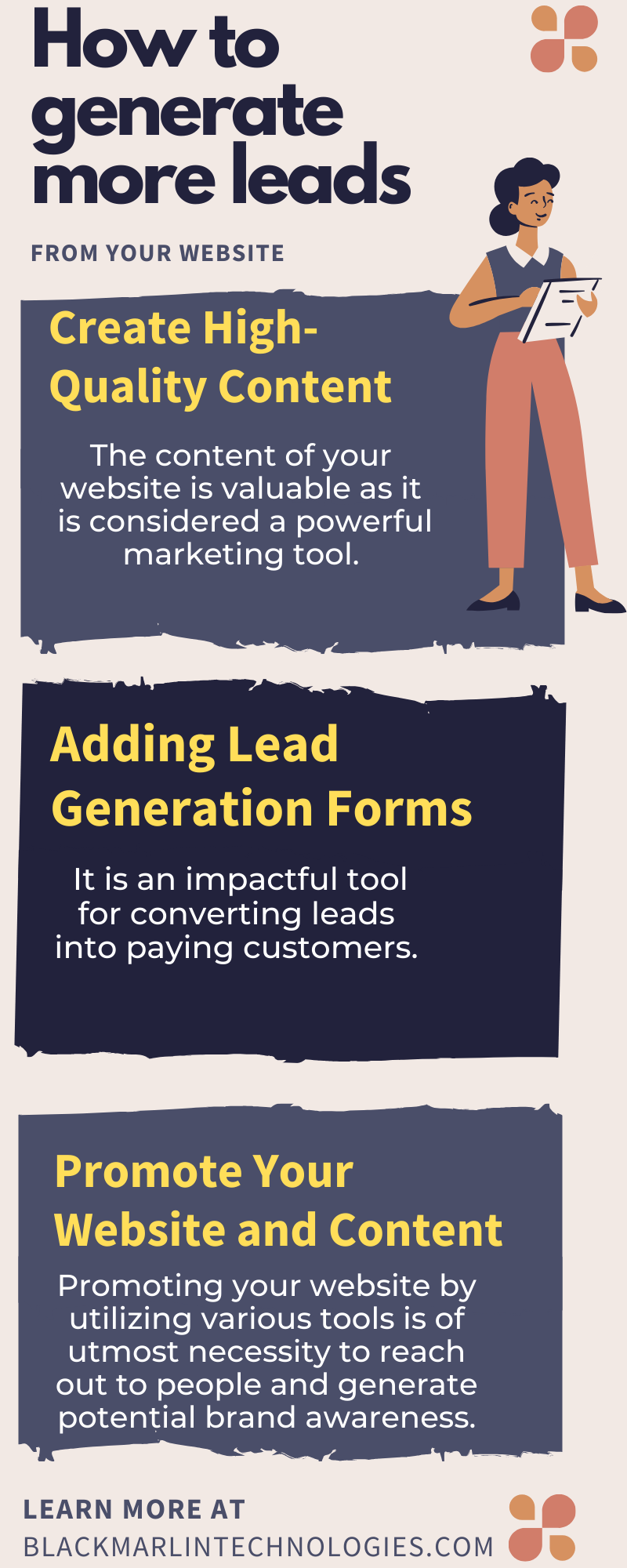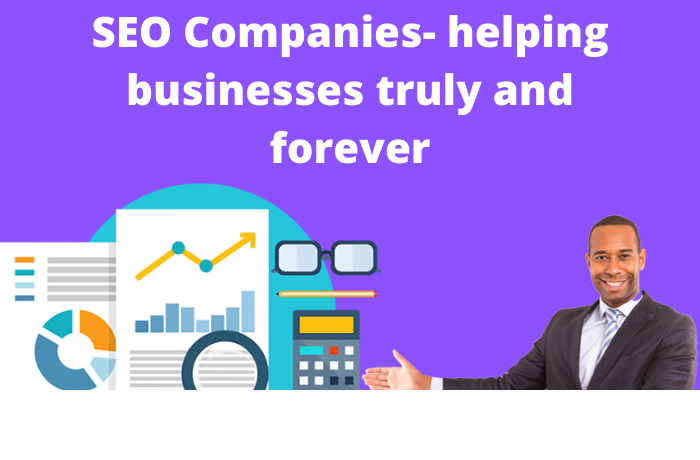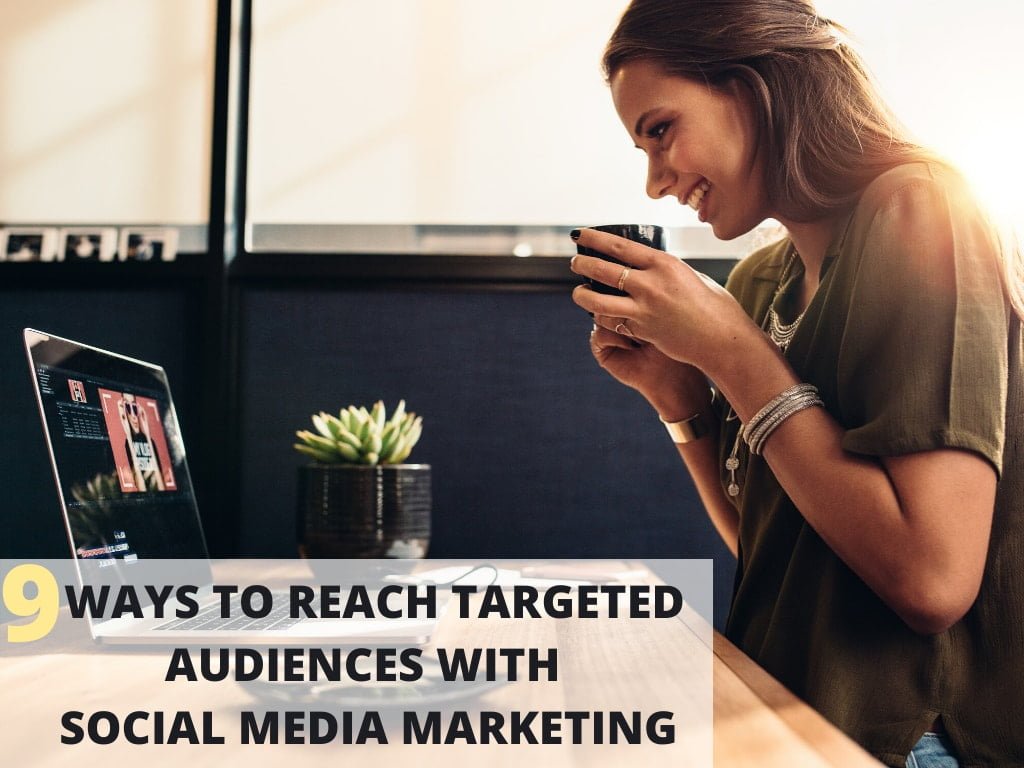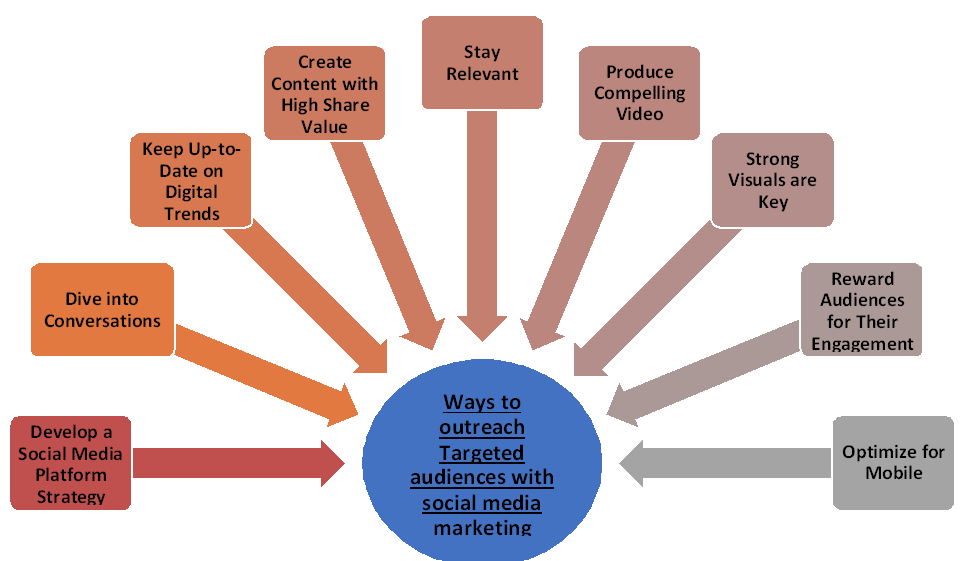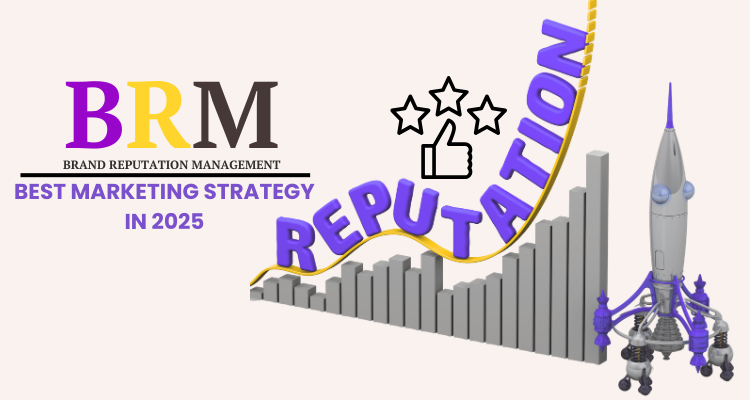Search Engine Optimization (SEO) has become a fundamental component of digital marketing strategies. But how much does SEO actually cost in 2025? The answer varies depending on the pricing model, provider type, industry, and region. This blog dives deep into monthly, hourly, project-based, one-time, performance-based, and dedicated SEO pricing—and explains each one in greater detail so you can make an informed decision.
SEO Pricing Models Overview:

A good starting point in understanding pricing for SEO is by exploring the various models incorporated by agencies, consultants, and freelancers. SEO services are not one-size-fits-all benefits, hence price models depend on the level of service, scope of work, and expected results. These are the types of such models that you may find:
- Monthly Retainers: Fitting for many businesses that require continuous support for long-term growth. In fact, this type of payment collects a fixed amount on a monthly basis, which includes aspects such as content, technical audits, link building, reporting, and strategy.
- Hourly Rates: In short, tend to be best for one-off consulting, training, or other forms of specific activities such as fixing the site errors or technical SEO problems.
- Project-Based SEO: The most common applications of the services are defined by specific targets or scopes such as an audit, a migration, or a new website. The price will vary across a wide range depending on how complex or large the project is.
- One-Time SEO: Mainly focus on companies that need basic SEO work done. It’s a great first stepping stone for very small new entrants to the startup world or brand new websites.
- Performance-Based SEO: Prices are based on results attained such as high keyword rankings, leads, or conversions. Share risks model but usually accompanied by base fees.
- Dedicated SEO: This is a model that offers a full-time SEO service either in the in-house expert or outsourced team focused only on your business. This model would be suitable for larger organizations, or aggressive growth-oriented companies.
Here’s a quick breakdown of the most common models:
| Pricing Model | Average Cost (USD) | Best For |
|---|---|---|
| Monthly Retainers | $500 – $7,500+ / month | Ongoing optimization |
| Hourly SEO | $75 – $200 / hour | Short-term tasks, consulting |
| Project-Based SEO | $1,000 – $30,000+ / project | Specific objectives (e.g., audits, revamps) |
| One-Time SEO | $750 – $5,000+ | Startups, basic on-site/off-site setup |
| Performance-Based SEO | Commission or bonuses | Lead/sale-driven businesses |
| Dedicated SEO Expert | $1,500 – $5,000+ / month | Companies seeking full-time SEO involvement |
Monthly Retainer SEO Pricing
Retainer monthly SEO is the most popular model with the most benefits working for a growing business. With a retainer, the company can benefit from continuous SEO support and long-term strategic improvements. On the average, the retainer covers activities such as on-page optimization and off-page strategies (that might include link building), technical SEO audits with monthly reports, content development, and local SEO improvements.
What’s included in Monthly Retainers?
- Keyword Research & Tracking
- Competitor Analysis
- Technical SEO Fixes
- Content Optimization & Blogging
- Link Building
- Analytics & Reporting
- Local SEO (Google Business Profile optimization)
- Conversion Tracking & UX Audits
Average Monthly Pricing Tiers
| Service Level | Cost Range (USD) | What You Get |
|---|---|---|
| Basic Plan | $500 – $1,000/month | Small businesses, low competition, 5–10 keywords |
| Mid-Level Plan | $1,000 – $3,000/month | Medium businesses, 10–30 keywords, regular content & backlinks |
| Advanced/Enterprise Plan | $3,000 – $7,500+/month | National SEO, aggressive link building, multiple landing pages |
Monthly SEO packages are usually flexible and can grow as the business grows. Excellent options for companies that seek an online presence that is strong, authoritative, and long-lasting.
How much does SEO cost per hour?
Hourly pricing is a flexible option that’s perfect for businesses looking for occasional help, expert advice, or specific SEO tasks. It’s commonly offered by freelance professionals, SEO consultants, or agencies when clients need support on a task-by-task basis.
What’s Typically Included in Hourly SEO?
- Technical SEO fixes (e.g., resolving crawl errors, redirects)
- One-on-one SEO consulting or training
- Website audits or on-page optimization
- Keyword research and mapping
- Backlink profile analysis
Average Hourly Rates in 2025
| Provider Type | Average Hourly Rate (USD) | Notes |
|---|---|---|
| Freelancers | $75 – $100/hr | Suitable for small tasks or solo projects |
| Mid-Tier Agencies | $100 – $150/hr | Offer broader capabilities and collaborative approach |
| High-End Consultants | $150 – $300+/hr | Ideal for strategic planning or corporate SEO guidance |
It is great for small projects or where companies want expert advice but cannot commit to long-term contracts. This is also great for organizations with an in-house team that just wants occasional outside expertise.
Project-Based SEO Pricing
As explained in the section “Project-Based SEO Pricing”, the companies normally choose the option of one-time project-specific SEO service. This is the best model for those who want to have clear goals or deliverables in mind, such as a website audit, content overhaul, or SEO migration work.
What’s Typically Included in Project-Based SEO?
- Website Audit: Comprehensive analysis of current SEO performance.
- SEO Migration: Strategy and implementation for changing websites or domains.
- On-Page Optimization: Fixing metadata, headings, and structure.
- Keyword Research: A deep dive into high-performing keywords.
- Content Strategy: Planning and executing SEO-friendly content.
- Backlink Strategy: Establishing a plan to build authoritative backlinks.
Average Project-Based Pricing
| Project Type | Price Range (USD) | What’s Included |
|---|---|---|
| Website Audit | $1,000 – $5,000+ | Full audit of existing SEO, tech issues, backlinks, etc. |
| Website Redesign SEO | $5,000 – $15,000+ | Complete overhaul of on-site and off-site SEO elements |
| SEO Migration | $2,000 – $10,000+ | Strategy and implementation of SEO during site migration |
| Content Optimization | $1,500 – $7,500+ | Revising and optimizing blog posts, landing pages, etc. |
When to Choose Project-Based SEO?
- Clear, One-Time Goals: When you have a single goal like a website launch or an SEO audit.
- Startups or New Websites: If you’re starting from scratch, a project-based SEO package could be the most cost-effective.
- Specialized Tasks: For tasks like fixing core technical SEO issues or boosting SEO during a site redesign.
One-Time SEO Pricing
This refers to the “One-Time SEO Services” section, which usually means one-off SEO activities. A typical case would be for any business that needs a quick SEO fix or would like to resolve some fundamental SEO issues without having ongoing services.
Here’s an explanation of the key aspects that could go into this section:
- Initial Site Audit: Complete website check up for site audit to evaluate the effectiveness of SEO operation. This includes broken links, missing meta tags, and much more such as technical errors.
- On-page SEO: One-time optimization of page titles, meta descriptions, header tags, and body copy according to SEO best practices.
- Keyword Research: Research high-value keywords relevant to the business and optimize the content to target these keywords.
- Backlink Strategy: This is your one-off plan to have a better backlink profile by removing backlinks that hurt your profile or adding quality backlinks.
- Local SEO Setup: If you are targeting a local audience, one-time SEO may include setting up and optimizing your Google My Business account.
Average Cost for One-Time SEO Services
This marketing is said to be cheaper than an ongoing cost, still it varies very much on the level of the complexity of the task.
| Service Type | Price Range (USD) | What’s Included |
|---|---|---|
| Site Audit | $750 – $3,000+ | Full technical SEO analysis, website health check |
| On-Page SEO Optimization | $1,000 – $5,000 | Content and metadata improvements |
| Keyword Research | $500 – $2,500+ | Research and targeting of SEO-optimized keywords |
| Local SEO Setup | $500 – $1,500+ | Google My Business and local citations setup |
When Should You Go For One-Time SEO Services?
- New Website Launch: If You’re Launching A New Site One-Time SEO Service Will Ensure SEO Best Practices Were Followed In Developing It.
- To Fix Technical SEO Issues: When There Are Foundational Problems On Your Site Such As Broken Links Or Slow Loading Speed Which Need To Be Fixed.
- Ranking On Certain Keywords: For Some Businesses That Need To Optimize Their Content For Specific Search Terms Or Rank For Certain Keywords.
One-time SEO services are best for companies that need short-term help or a quick boost to get started on SEO but don’t want to commit to an ongoing retainer or project.
Performance-Based SEO Pricing
This is the SEO performance pay model, wherein costs are directly related to performance adopted=brought out by increased keyword rankings, traffic, or conversion (sales, sign-ups, etc.).
This model is appealing to many because result-based payment reduces their risks, which impedes investment returns when performance does not meet certain established criteria for it.
What Does Performance-Based SEO Cover?
- Result-Driven Orientation: The focus lies in obtaining measurable results on SEO. Often measurement will be related to specific KPIs (Key Performance Indicators). Examples of KPIs are ranking on targeted keywords, increased traffic, or conversion percentage.
- Optimizing Services: This encompasses regular SEO work such as keyword research, on-page optimization, link-building, and technical fixes, but these activities are defined as successful in how much they help attain specific results as opposed to some unspecified goal.
- Achievement-based Payment: The payment is made upon the results achieved, something agreed-upon before commencing work. For instance, if the SEO company assists in getting a particular keyword into the top three spots of Google, they either share a percentage of revenues made from traffic driven from that keyword or obtain a specific bonus.
Types of Performance Metrics Used:
- Rank: Achieving top rank in search engines for certain keywords.
- Traffic: An increase of a certain percentage in organic traffic.
- Lead or Sale: A return boost in the number of leads or sales derived from organic searches.
- Conversion: More defined goals – form submissions, newsletter subscriptions, etc.
Average Cost Structure
Performance-based SEO is usually variable depending on the understanding of the client. It generally covers:
- 1. Base Fees: Standard monthly charges that cover ongoing work that could be strategy, content creation or technical optimization.
- 2. Performance bonuses or commissions: Extra fees paid as and when performance milestones are achieved.
Here’s an explanation of key aspects of Performance-Based SEO:
| Performance Metric | Payment Type | Example Costs |
|---|---|---|
| Keyword Rankings | Fixed fee + bonuses | $2,000/month + $500 for each keyword that ranks in the top 5 |
| Organic Traffic Increase | Percentage of sales/traffic | 10% of the revenue from new traffic |
| Leads or Conversions Increase | Fixed fee + revenue share | $1,000/month + 15% of revenue from new leads |
When to Choose Performance-Based SEO?
- High-Risk Industries: If a business is wary of spending upfront without seeing results (e.g., startups, eCommerce).
- Clear ROI Metrics: When a business has defined sales or leads goals.
- Confidence in SEO Capabilities: This model is attractive to clients who believe that the SEO agency can deliver measurable outcomes.
Industry-Specific SEO Costs
The term “Industry-Specific SEO Costs” refers to variations in SEO pricing due to the industry a business operates in. Different industries have different levels of competition, keyword difficulty, and target audiences, which all go into determining SEO services pricing. Some industries, on highly competitive keywords, require a more extensive and specialized SEO effort than others, where the competition might be less, allowing lower costs.
An explanation of what is covered by Industry-Specific SEO Costs and its implications on pricing:
Industry-Specific SEO-Cost Factors:
1. Competition Level
Highly Competitive Industries (e.g., Legal, Insurance, Finance, Real Estate, etc.): Because many competitors are vying for the same keywords and audience in these industries, SEO pricing is typically higher. Competing for highly competitive keywords takes considerable backlink-building, content-creating, and technical SEO work.
Low Competitive Industries (e.g., niche local service or lesser-known products): This means lower SEO costs for the business on account of fewer competitors, plus it’s easier to rank for keywords relevant to these industries.
2. Search Volume and Keyword Difficulty:
Keywords with higher search volume tend to be more competitive, thus, raising the cost of SEO. For example, the price for ranking for the keyword “personal injury lawyer” in a more populated area is likely to be significantly higher than for a niche local. keyword for example, Searching “Carpet Cleaning Williams” across cities with minimal competition is one of the direct examples.
3. Target Audience
Local V/S National SEO: Businesses that are targeting local customers such as plumbing services or dentists may have SEO costs lower than businesses that are targeting national and international customers. But local hire SEO know-how like Google My Business optimization, locality citation, and locally relevant content.
B2B vs. B2C: Business-to-business industries may need more strategic, content-rich SEO for decision-makers, while business-to-consumer industries may focus on traffic-oriented keywords, user experience and customer engagement.
4. Seasonal and Trend-Driven Nature:
Some industries can be affected by the times of the year, such as travel, retail, or tax services in which the SEO costs might be high at certain points within a year because you may need to raise your SEO efforts within the peak seasons.
Temporary nature in SEO for businesses Based on Trend Products or Services- Business SEO may be very much temporary and have a lot of changes in its strategy because it follows trends.
5. Industry Regulations and Compliance:
There are stringent regulations on what can be published, how it is to be presented, and how the SEO techniques should be applied in a specific industry, such as healthcare, finance, and law. The restrictions might call for more specific knowledge and drawing more careful strategy results in increased SEO service costs.
Example of Industry-Specific SEO Pricing:
| Industry | Average Monthly SEO Cost (USD) | Factors Affecting Cost |
|---|---|---|
| Legal | $5,000 – $20,000+ | Highly competitive keywords, local and national targeting, lead generation, regulatory compliance |
| Finance & Insurance | $4,000 – $15,000+ | High competition, complex services, keyword difficulty, trust-building strategies, content and backlinking |
| Real Estate | $3,000 – $10,000+ | Local SEO focus, high competition for listings, market-specific content |
| E-Commerce | $2,000 – $15,000+ | Product optimization, paid ads integration, keyword variation, seasonal campaigns |
| Healthcare | $2,000 – $10,000+ | Regulatory issues, local SEO, trust signals, specialized medical content |
| Local Services (e.g., Plumbing, Electricians) | $500 – $5,000+ | Less competition, but requires local SEO, GMB optimization, citations |
| Education/Academia | $1,000 – $8,000+ | Content marketing, authority-building, backlinks, niche targeting |
When to Consider Industry-Specific SEO Costs:
- Highly Competitive Industries: If your industry is competitive, you should be prepared to put in extra effort and resources to outdo your competitors through SEO, and such use will eventually require more for SEO costs.
- Could Be Novice or Privately Own Averages: Such places may pay less for SEO but it would be valuable to focus on keyword translations to local-specific atmospheric presence.
- Highly Regulated Sector: An establishment within a regulated field will be expected to have special SEO services that align with and also align with specific standards and guidelines of the sector, which will eventually be charged higher.
Dedicated SEO Specialist Cost
With a clear focus on specialized SEO duties, a Dedicated SEO Specialist works full-time or on an assigned number of hours weekly/monthly for the SEO needs of a business. Some companies prefer to have a dedicated resource that works continuously on their SEO tactics rather than hiring an agency or freelancers for particular projects or tasks.
What’s Included in Dedicated SEO Specialist Services?
A dedicated SEO specialist typically provides a comprehensive range of SEO services, which may include:
- On-page SEO: Optimizing content, images, metadata, and internal linking.
- Off-page SEO: Building high-quality backlinks, improving domain authority.
- Technical SEO: Site audits, improving site speed, mobile optimization, schema markup, and URL structure.
- Content Strategy: Developing a content plan that aligns with SEO goals.
- Keyword Research: Identifying keywords that drive organic traffic and conversions.
- Competitor Analysis: Understanding the competition to create strategies that outperform them.
- Monthly Reporting: Tracking SEO progress and ROI.
How Much Does a Dedicated SEO Specialist Cost?
The cost of hiring a dedicated SEO specialist varies depending on their experience, location, and the scope of services they provide. Here are general cost estimates:
| Experience Level | Monthly Cost |
|---|---|
| Entry-Level SEO Specialist | $1,500 – $3,000/month |
| Mid-Level SEO Specialist | $3,000 – $5,000/month |
| Experienced SEO Specialist | $5,000 – $10,000+/month |
How to Choose the Right SEO Package for Your Business?
Choosing the right SEO package is important for the success of your digital marketing strategy. The right SEO plan ensures that your website is ranking well in the search engines, attracting high-quality traffic, and thus meeting your commercial objectives. Here’s how you could choose an SEO package that best fits your business requirements:
Understand Your Business Goals and Objectives
Another consideration for selecting an SEO package is the goal you intend to achieve through SEO. Different SEO packages have different aims:
- Brand Awareness: If yours is a young business that is attempting to build brand awareness, an SEO package that places emphasis on creating strong foundational SEO elements such as on-page optimization and content creation is more appropriate.
- Lead Generation: For lead generation, packages that drive relevant traffic along conversion optimization and local SEO are more suitable.
- An E-commerce Store: For your e-commerce store, you will require an SEO package that covers product optimization, schema mark-up implementation, and strategies to enhance the rankings of your products.
Assess Your Budget
All SEO is valuable, and the prices vary according to the package types. A few options include the following:
- Monthly retainer: This is best suited for long-term input of SEO work into your business. It is generally the most affordable way to have consistent SEO work done in your business to facilitate incremental improvements.
- Project-based packages: These packages are best if you have specific requirements, such as an SEO audit or a redesign of the website.
- Performance-based SEO: Pay on performance if you would like results to include ranking for some keywords, leads, or conversions, which could work should you be in a very competitive market willing to risk some of those rewards.
Evaluate the Services Included in the Package
Not all SEO packages offer the same services. Make sure you evaluate the following:
- On-Page SEO: Check if the package includes keyword research, content optimization, meta tag creation, and internal linking.
- Off-Page SEO: Look for services like backlink building, guest blogging, and social media promotion that improve domain authority.
- Technical SEO: Some packages will include a full technical SEO audit, ensuring your website is search-engine friendly, with attention to site speed, mobile responsiveness, and secure browsing (HTTPS).
- Content Marketing: Does the package include content creation or blog writing? Content is a major component of SEO, and a package without it might be limited.
Consider Your Industry and Competition
Certain industries are more competitive than others, which means you may need a higher-tier SEO package.
- Competitive Industries: Industries like legal, medical, real estate, and finance require aggressive strategies, which can increase the cost of SEO services.
- Niche Industries: If you’re in a less competitive niche or have a local focus, you might be able to work with a lower-cost package.
Understand the Level of Customization
The greatest SEO packages need to be made according to the unique needs and demands of your company; Some packages involve a one-size-fits-all approach, which may not suit every business. The experts or agencies offering these packages usually have better insight into your goals and market, which allows them to present a more customized plan.
Evaluate the Agency’s Reputation and Track Record
Choosing an SEO provider who has a history of successful campaigns is crucial. Here are a few signs to look for before you pay any money for a package:
- Case Studies: Examples and testimonials of success from previous clients.
- Reviews: Check reviews from independent sources to gauge the agency’s reputation.
- Experience with Your Industry: An agency with experience in your industry may be better suited to address industry-related SEO challenges.
Check for Transparency and Reporting
The package must contain transparent reporting and clear metrics for measuring SEO success. Periodic reports must be shared with the client tracking keyword rankings, traffic, conversions, and other relevant datasets.
How Much Should I Spend on SEO?
The ideal price to pay for SEO services depends on many determining factors like the size of the business, the competitive aspects of that business, and the very goals in mind. These steps guide how much worth it is to see in the expense for SEO:
Understand Your Goals and Expectations
Setting business objectives is important to determine how much to spend on SEO. Is it traffic, sales, or brand awareness? The more aggressive the goals, the higher your budget would need to go. For example:
- Basic SEO: For a small business or a new website, investing in basic on-page SEO (like keyword optimization, content creation, etc.) might be sufficient.
- Aggressive Growth: If you want to target highly competitive keywords or markets, a larger budget will be necessary for advanced strategies, such as link building and high-quality content marketing.
Consider Your Industry
Industries vary greatly in terms of SEO competition. For example:
- Highly Competitive Markets: Industries like real estate, law, finance, and healthcare require significant investment due to their competitive nature. In such markets, SEO prices can be higher as it often involves more complex strategies and longer timelines.
- Low-Competition Markets: If your business operates in a niche or local market with less competition, your SEO budget can be lower. You may only need a basic SEO strategy to rank well for relevant keywords.
Evaluate Your Website’s Current SEO Health
If there is already a site, you can look at its current SEO performance. Websites with technical issues, low-quality content, and spammy backlinks will take more work-and more money-to fix. An in-depth SEO audit can let you know what needs the most work.
Choose the Right SEO Pricing Model
SEO pricing can be structured in several ways, depending on the service provider:
- Monthly Retainers: For long-term, ongoing optimization. This is ideal if you want continuous improvement over time.
- Project-Based SEO: For one-time fixes, such as a website audit or content refresh.
- Hourly SEO: Useful for quick fixes or small businesses needing occasional help.
Set a Realistic Budget
Once you’ve considered these factors, you’ll be in a better position to set a realistic budget. Typical SEO costs can range from:
- $500 to $2,000 per month for small businesses in less competitive industries.
- $2,000 to $10,000 per month for medium-sized businesses or those in competitive industries.
- $10,000+ per month for large enterprises or highly competitive markets.
Ultimately, the amount you decide to allocate for SEO comes when you are ready with a well-determined need, goal, and resource for your business. SEO is a long-term investment, and thus it is important to budget for it according to your needs. You have to ensure you’re spending on decent services leading to a sustainable and measurable outcome.
Why Pay for SEO Instead of PPC or Other Platforms?
SEO stands for Search Engine Optimization, and PPC stands for Pay-Per-Click. For both of these, they are powerful digital marketing tools. However, each of these works very differently and suits a different business goal, budget, and long-term strategy. Many businesses prefer SEO over PPC or any other platform because of these reasons:
Long-Term Results vs. Immediate Results
- SEO: SEO does not provide instant results because its investments are made initially: time and resources. However, it will yield organic traffic in the long run that doesn’t stop flowing once payment ceases. Rankings will remain in the search engines without continued payments (although continued optimization will assist in maintaining rankings).
- PPC: Traffic comes from PPC, like Google Ads, spends when the ads go, and returns the moment you stop. The magic of PPC lies in its immediacy in delivering leads, but it will demand continuous funding to keep bringing in prospects.
Cost-Effectiveness
- SEO: The high initial cost of SEO may seem too high an investment for most, especially in terms of competitive industries, though it is seen as one of the more cost-effective ways for advertising in terms of long-term return. In fact, once you’ve achieved high organic rankings, maintaining them will cost you far less than you would have spent every month paying for them by ads.
- PPC: With time, it can become increasingly expensive especially when the industry is markedly competitive. The campaigns never get optimized regularly, or monitored, and they find themselves wasting money buying clicks that don’t bring in any sales or leads.
Builds Trust and Credibility
- SEO: Users tend to trust organic search results more than paid ads. Ranking in the top positions for relevant keywords signals to your audience that your business is an authority in that niche. This can build trust and long-term customer loyalty.
- PPC: Ads are clearly marked as paid, which can lead some users to be skeptical about the quality or credibility of your website, especially if they’re only seeing an ad and not organic search results.
Targeted Traffic
- SEO: With SEO, you can target users who are actively searching for your products, services, or information related to your business. By optimizing for long-tail keywords and local SEO, you can attract highly targeted traffic that is more likely to convert into customers.
- PPC: PPC allows for detailed targeting based on demographics, interests, location, etc., but it can sometimes bring in irrelevant traffic if not optimized properly, which could increase your cost-per-conversion.
Higher Click-Through Rates (CTR)
- SEO: Studies have shown that organic search results often have a higher click-through rate (CTR) than paid ads. Users tend to trust organic results more and often skip ads altogether, especially on mobile devices.
- PPC: While PPC ads can have a decent CTR, it is typically lower compared to organic listings because many users have developed “ad blindness” and tend to focus more on the organic results.
Sustainability
- SEO: Once you’ve invested in SEO and achieved strong rankings, you can enjoy a sustainable flow of organic traffic for years. You still need to maintain and optimize, but the overall cost to sustain SEO efforts is typically lower than maintaining PPC ads.
- PPC: PPC campaigns need constant monitoring and updating to ensure they remain effective. Without constant optimization, your costs can rise without yielding better results.
How Long Does SEO Take?
It is important to know the duration of results from SEO to have realistic expectations because it is a long-term strategy. The results don’t happen quickly after beginning the work, and the benefits of the investment roll out over time. Here is why:
- It’s a Steady Process: SEO has multiple components that would include content optimization, targeting keywords, backlink development, and technical improvement–these even ensure that the website is improving in the rankings. While some advertising pays for immediate client traffic, search engines need to build up authority with their constant attention and continual amendments.
- Ranking Fluctuations: SEO results can, very often, be unpredictable. There might be many changes in the rankings in the first month or two before everything has settled down. Google needs time crawling, indexing, and ranking sites, according to the content and relevance. Thus, experiencing some back-and-forth before traffic hikes is pretty normal.
- How long to wait for results
Although it may take different periods to see significant improvements, businesses usually expect to see the first fruits of SEO work initially within:
3 to 6 months: This is a general timeframe for seeing an increase in rankings and traffic for moderately competitive keywords.
6 to 12 months: For more competitive industries or keywords, it may take up to a year to see significant ranking improvements.
12+ months: In extremely competitive sectors, sustained effort may be needed for a year or more before achieving top rankings and noticeable ROI.
- Factors That Influence SEO Timing
Several factors can impact how long SEO takes:
Competition: Highly competitive industries will take longer to see results due to the amount of competition for top rankings.
Website Health: Websites with poor technical SEO or a lack of quality content may take longer to see results as foundational improvements are made first.
Content Quality: High-quality, engaging, and relevant content plays a crucial role in how quickly your site ranks. More content often means more opportunities for ranking.
Backlink Profile: Building backlinks from authoritative sites is a critical ranking factor. High-quality link-building campaigns may take time to show visible results.
- Ongoing Optimization
SEO doesn’t stop once you achieve your desired rankings. Regular updates, content additions, and improvements in SEO strategy are all essential to keep the position. Continued optimization ensures that your site remains a contender and trendsetter even after you have achieved success.
Why SEO Agencies Cost More Than Freelancers?
While companies weighing the options of SEO agencies versus freelancers may reason that the latter holds promise for a better deal, agencies are much higher-priced in comparison. Here is why:
- Wide Expertise and Team Resources: SEO agencies employ a whole team of experts, each specializing in one aspect of SEO—technical SEO, content production, link building, analytics, etc. Their diversity lends itself to a more comprehensive approach to your SEO strategy, which translates into better results but more money. A freelancer, though, may specialize only in one area, or would multitask, so the breadth of work is limited.
- Scalability and Capacity: An agency has the resources to scale its work on large and complex projects. They can take on several clients simultaneously without sacrificing quality and have the infrastructure to support your requests for content production and outreach, or ongoing optimization. Freelancers may have trouble scaling their work, particularly when working on multiple clients at the same time.
- Credibility and Past Work: SEO agencies generally have successful case studies and testimonials as proof of their respective successes. They tend to have network portfolios of respectable clients which evidently justify their higher charges. Freelancers may lack such recognition and even experience. They can deliver excellent work-worthy capabilities, but agencies can always charge a premium because of their reputation and exclamations on results.
- Full-Service Solutions: The freelance approach generally provides only limited, and in some cases there is no scope at all, beyond SEO tasks. However, agencies are in a position to furnish additional services: web design, PPC, content marketing, social media management, and so on, giving them a more holistic approach to your online presence. This added value accounts for higher pricing.
- Operational costs and overhead: he SEO agency is dependent on operational costs such as office spaces, salaries of a team of specialists, project management tools, client support, etc. All these costs run up into larger figures in the overall price of the package they offer. Most freelancers work from home and hence incur fewer overhead costs than full-fledged agencies. This in turn allows them to charge more affordable fees for their work.
- Long-Term Support and Account Management: For the most part, agencies will offer you that additional long-term support and account management feature in addition to the regular interaction with them, which indeed could have quite a lot of advantages. Then, you have the ability to modify your strategies using analytics, track your progress, and have your SEO campaigns continue to innovate your freelance offering as opposed to a more dedicated representation that is less frequent based on demand streams.
Conclusion
SEO is not a one-off thing to tick on your list. It is a long-term strategy that needs planning, investment, and perseverance. Whether starting from scratch or working on an already existent presence, knowing SEO pricing models in 2025 will help you make better decisions.
There is an SEO solution that fits every budget and will pay for itself in return on investment. Go for a provider that understands your objectives, values transparency, and focuses on data-driven methodologies.
Do you need help in finding an apt SEO fit? Connect with us today to receive an SEO plan specifically tailored to your objectives, industry, and expected growth.
Frequently Asked Questions (FAQs) About SEO Pricing
- What is the average cost of SEO for a small business?
The average cost for small businesses varies depending on the model they choose. Monthly retainers generally range from $500 to $3,000 per month, while project-based SEO can cost anywhere from $1,000 to $30,000. Freelancers may offer more affordable options, with hourly rates ranging from $50 to $150. - Is performance-based SEO worth it?
Performance-based SEO can be a great option if you’re looking to align SEO costs with results. However, it comes with higher risks, as your SEO costs depend on achieving certain results. It’s best suited for businesses with specific lead generation or sales goals but requires a clear understanding of your performance metrics. - How much does a dedicated SEO expert cost?
The cost of a dedicated SEO expert typically ranges from $1,500 to $5,000 per month, depending on the level of expertise, scope of work, and the size of your business. This option is ideal for businesses that require ongoing and specialized SEO attention. - What should I expect from a monthly SEO package?
A monthly SEO package typically includes keyword research, content creation, on-page optimization, link-building efforts, technical SEO fixes, and regular reporting. More advanced packages may include local SEO, UX audits, and conversion rate optimization. - How do I know if SEO is working for my business?
You can track the success of your SEO efforts by monitoring key performance indicators (KPIs) such as organic traffic growth, keyword rankings, bounce rate, and conversion rates. Regular reporting from your SEO provider can help you understand the progress and ROI from your SEO investment. - How long does it take to see results from SEO?
SEO results typically take 3 to 6 months to become noticeable, though it can take up to a year for highly competitive industries. The time it takes depends on the scope of the project, the competition, and the ongoing efforts you invest in SEO. Patience is key to long-term SEO success.
 +1-(646) 362-1414
+1-(646) 362-1414 +91-88-266-83820
+91-88-266-83820


